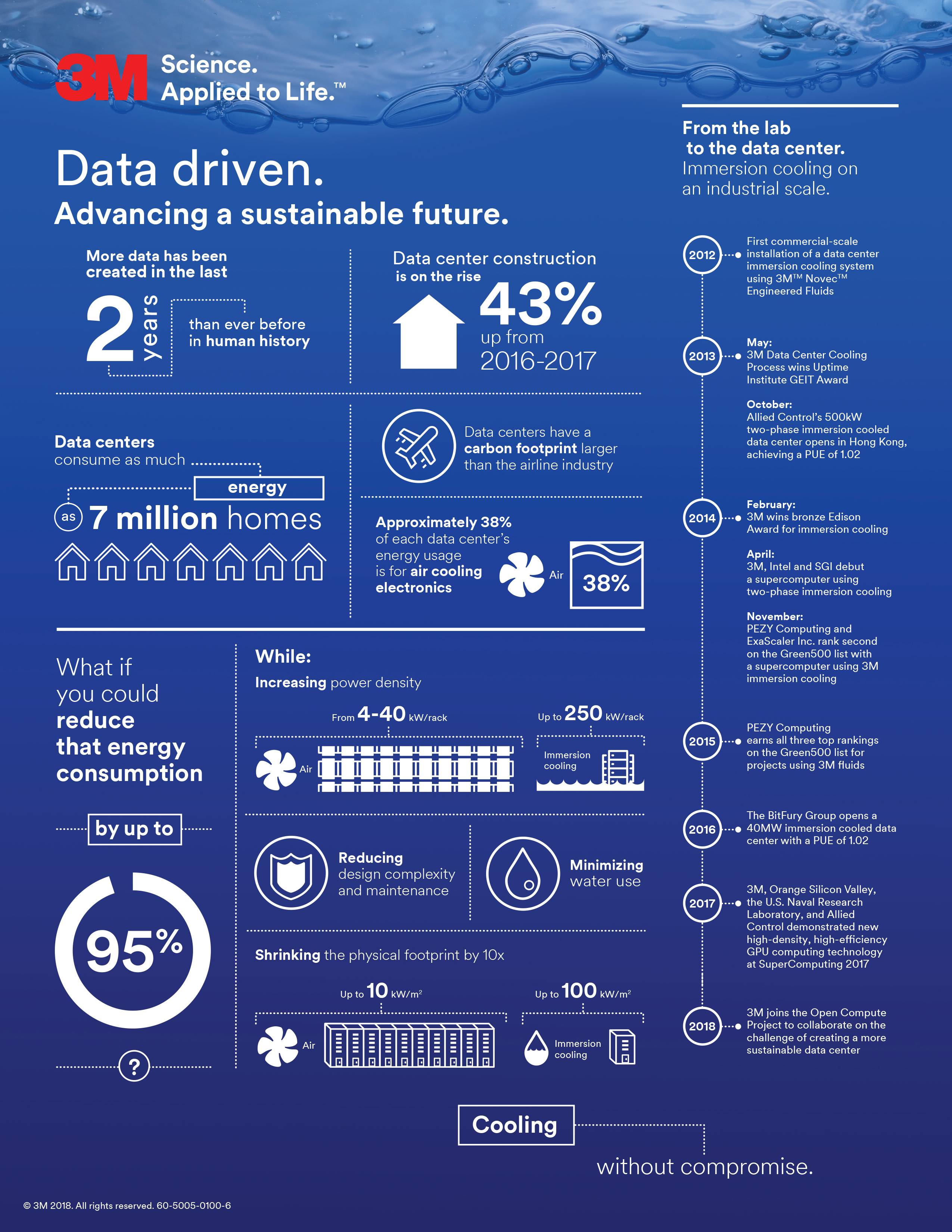3M experts say immersion cooling addresses data centers’ energy efficiency challenges
As data grows exponentially, so does its environmental footprint. This rapid growth is creating an expanding energy efficiency gap. A new documentary short, “Data Driven. Advancing A Sustainable Future.,” launched by 3M, explores how to close this gap to help create a more sustainable data center. According to 3M experts, the industry has the power to reduce energy consumption by up to 95 percent in data centers with immersion cooling technology.
Data is critical and is used to help solve the world’s toughest issues, however the amount of data created doubles every two years – and now managing that computing capacity is a challenge. 3M recently joined other industry leaders at the Open Compute Project (OCP) who are committed to closing the data center energy efficiency gap.
“It’s exciting to be able to partner with multiple organizations,” said Rocky Bullock, CEO of Open Compute Project. “The industry has a wide variety of skills and experience, and it is wonderful to see those skills come together to accelerate improvement.”
“Incremental measures will struggle to keep pace with the steep trajectory of data growth. The industry needs transformative innovations for sustainability to grow alongside the rise of big data. We’ve proven that immersion cooling can both enable a data-driven future while helping ensure that future is environmentally sustainable,” said Michael E. Garceau, data center business manager at 3M. “Our society relies on data and technology, but we also need it to be energy efficient. We are proud to join the Open Compute Project to help reduce the energy footprint of data centers.”
Roughly 38 percent of the electricity consumed by a data center operation is used to cool electronics. Immersion cooling uses only a fraction of the energy of an air-cooled system. The most efficient immersion cooling methods can achieve a PUE of less than 1.02, down from 1.1 to 2.0 PUE with traditional data center cooling, by eliminating chillers and air conditioning units.
Immersion cooling allows for a tighter configuration of components in less floor space than typical air-cooled systems. It enables 100+ kilowatts of computing power per square meter and can be housed in 10 times less floor space. With immersion cooling, you can increase processing power and reduce latency while running your electronics at full capacity with less wear and tear.
“Instead of spreading out the electronics so you can air cool them, you pack the electronics together with immersion cooling,” said Laura Nereng, electronics and energy business group sustainability leader at 3M. “It’s a practical solution that can be used in any geography.”
For more information attend the viewing of “Data Driven” at the 2018 OCP U.S. Summit on the Expo Hall Stage on March 21 or take part in the dialogue by attending the panel discussion engineering workshop moderated by 3M. Attendees of the Summit can also stop by 3M booth #B44 to see a new immersion cooling demonstration designed in collaboration with Vicor Corporation. Visit www.3M.com/DataDriven to learn more.
About 3M
At 3M, we apply science in collaborative ways to improve lives daily. With $32 billion in sales, our 91,000 employees connect with customers all around the world. Learn more about 3M’s creative solutions to the world’s problems at www.3M.com or on Twitter @3M or @3MNews.




